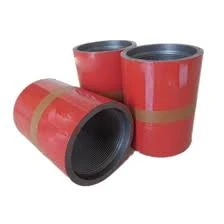- Afrikaans
- Albanian
- Amharic
- Arabic
- Armenian
- Azerbaijani
- Basque
- Belarusian
- Bengali
- Bosnian
- Bulgarian
- Catalan
- Cebuano
- Corsican
- Croatian
- Czech
- Danish
- Dutch
- English
- Esperanto
- Estonian
- Finnish
- French
- Frisian
- Galician
- Georgian
- German
- Greek
- Gujarati
- Haitian Creole
- hausa
- hawaiian
- Hebrew
- Hindi
- Miao
- Hungarian
- Icelandic
- igbo
- Indonesian
- irish
- Italian
- Japanese
- Javanese
- Kannada
- kazakh
- Khmer
- Rwandese
- Korean
- Kurdish
- Kyrgyz
- Lao
- Latin
- Latvian
- Lithuanian
- Luxembourgish
- Macedonian
- Malgashi
- Malay
- Malayalam
- Maltese
- Maori
- Marathi
- Mongolian
- Myanmar
- Nepali
- Norwegian
- Norwegian
- Occitan
- Pashto
- Persian
- Polish
- Portuguese
- Punjabi
- Romanian
- Russian
- Samoan
- Scottish Gaelic
- Serbian
- Sesotho
- Shona
- Sindhi
- Sinhala
- Slovak
- Slovenian
- Somali
- Spanish
- Sundanese
- Swahili
- Swedish
- Tagalog
- Tajik
- Tamil
- Tatar
- Telugu
- Thai
- Turkish
- Turkmen
- Ukrainian
- Urdu
- Uighur
- Uzbek
- Vietnamese
- Welsh
- Bantu
- Yiddish
- Yoruba
- Zulu
api 5ct coupling
The Importance of API 5CT Coupling in Oil and Gas Operations
In the oil and gas industry, the integrity and efficiency of operations hinge on a multitude of components and equipment. Among these, the API 5CT coupling holds a critical role in ensuring the seamless connection of casing and tubing pipes used during drilling and production activities. This article delves into the significance of API 5CT coupling, its specifications, and its applications in the field.
Understanding API 5CT Specifications
API 5CT is a specification developed by the American Petroleum Institute (API) to standardize casing and tubing products for the petroleum and natural gas industries. The standard outlines various grades, types, and manufacturing processes required to produce reliable and functional steel pipes. The coupling, often regarded as a minor component, plays a pivotal role in the overall performance of these pipes.
Couplings are short pieces of pipe with threads at both ends, allowing the connection of two lengths of tubing or casing. They are typically made from the same material grade as the pipes they connect, ensuring compatibility and strength. API 5CT couplings are classified into different grades, such as H40, J55, K55, N80, L80, and P110, each offering unique properties suitable for specific applications and environments. Understanding these classifications is crucial for selecting the appropriate coupling for different drilling conditions.
The Role of Couplings in Oil and Gas Operations
Couplings are essential in facilitating the assembly of pipe strings that are deployed into the wellbore. This assembly is crucial for maintaining control over the well as it penetrates geological formations, providing a conduit for extracting oil and gas. The integrity of these couplings directly impacts the entire operation, as poorly manufactured or inappropriate couplings can lead to leaks, equipment failures, and even catastrophic blowouts.
api 5ct coupling

In addition to ensuring structural integrity, API 5CT couplings also play a significant role in the safety of oil and gas operations. One of their critical functions is to withstand various environmental factors such as high pressure, aggressive formation fluids, and extreme temperatures. The high-quality materials and manufacturing processes specified by API help to ensure that these couplings can perform reliably under challenging conditions, thus minimizing the risk of accidents.
Applications of API 5CT Couplings
The applications of API 5CT couplings extend beyond mere connections. They are used extensively in various segments of the oil and gas industry, including onshore and offshore drilling, well completion, and production operations. For instance, in offshore drilling, where environmental conditions can be harsh, API 5CT couplings ensure the stability and safety of the subsea well structures.
Moreover, as the industry moves toward more complex and deeper drilling operations, the demand for high-performing couplings has escalated. New technologies and materials are being developed to enhance the performance and longevity of these components, catering to the ever-evolving challenges faced by oil and gas companies.
Conclusion
In conclusion, API 5CT couplings are far more than mere connectors in the oil and gas industry. They are crucial elements that ensure the safety, effectiveness, and reliability of drilling operations. By adhering to the specifications set forth by API, producers can guarantee that their coupling solutions meet industry standards, ultimately safeguarding equipment, personnel, and the environment. As the industry continues to advance, the role of couplings will undoubtedly evolve, but their importance will remain undisputed in the pursuit of efficient and safe oil and gas extraction.
-
Tubing Pup Joints: Essential Components for Oil and Gas OperationsNewsJul.10,2025
-
Pup Joints: Essential Components for Reliable Drilling OperationsNewsJul.10,2025
-
Pipe Couplings: Connecting Your World EfficientlyNewsJul.10,2025
-
Mastering Oilfield Operations with Quality Tubing and CasingNewsJul.10,2025
-
High-Quality Casing Couplings for Every NeedNewsJul.10,2025
-
Boost Your Drilling Efficiency with Premium Crossover Tools & Seating NipplesNewsJul.10,2025







